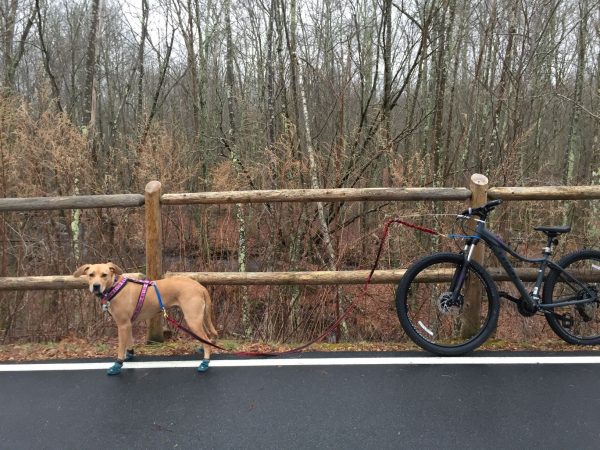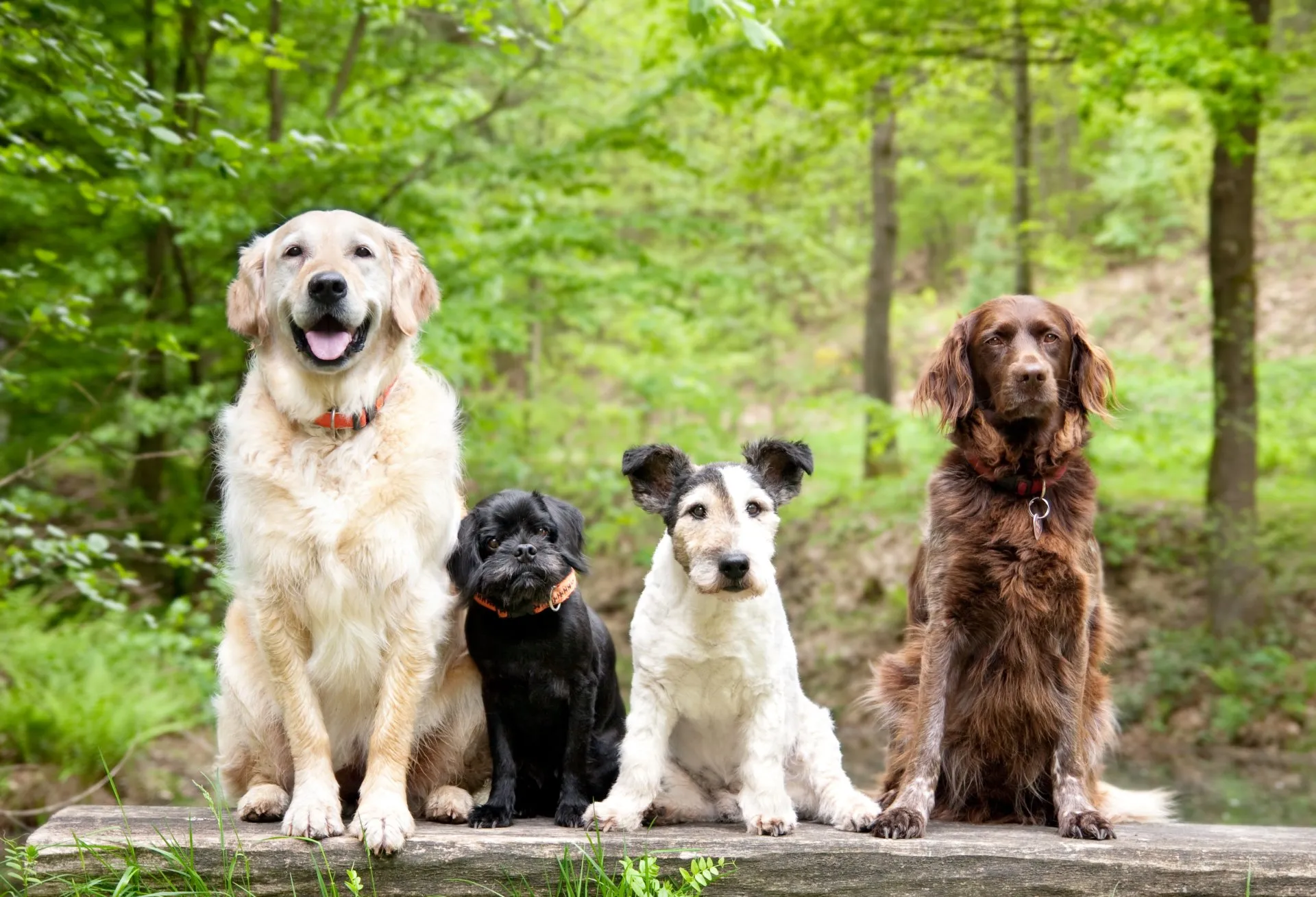Biking with dogs offers a refreshing way to enjoy the outdoors while keeping your canine companion active and engaged. This activity not only strengthens the bond between you and your pet but also provides substantial health benefits for both. When biking with dogs, it’s essential to consider the breed, age, and stamina of your dog to ensure the experience is enjoyable and safe for everyone involved. Proper training and the right equipment, like a sturdy leash, a well-fitted harness, and a reliable bike attachment, are crucial to prevent accidents and injuries. Additionally, it’s important to choose dog-friendly trails that are safe and not overly crowded, allowing your dog to comfortably keep pace. Biking with dogs can transform routine exercise into an adventurous escape, benefiting both the physical and mental health of dogs and their owners.
For dogs that have an abundance of energy, engaging them in activities like biking can be an excellent way to help them expend that vigor. Biking with dogs not only keeps them active but also allows both of you to maintain fitness. Below are several methods to safely enjoy a bike ride with your canine companion.
Biking with a Bike Leash
A bike leash is an attachment that allows your dog to run alongside your bike. This can be fun for short jaunts on a bike path. Watch for pad injuries, it is very easy to tear your dog’s pads while running on paved paths. Try to find a dirt trail with plenty of space for your dog to run alongside you.
Bikejoring

Bikejoring, an engaging way to experience biking with dogs, involves your dog being harnessed to your bike’s frame via a bungee line and a specialized pole that prevents the line from entangling in the front tire. In this sport, your dog takes the lead, pulling the bike while you pedal behind. As with any athletic endeavor involving animals, bikejoring demands significant time and training to ensure both your safety and your dog’s well-being. It’s essential to thoroughly research and assess whether bikejoring suits both your fitness levels and your dog’s capabilities.
Mountain Biking with Dogs

Many mountain bikers enjoy taking their “trail dog” out with them. It is important that you know how to mountain bike before you attempt this with your dog. There are many mountain biking groups in New England that would be happy to teach you the trade. Your local bike shop should know how to connect you to the right group. Unlike the other activities, it is very dangerous to have your dog attached to your bike for this activity, so this is not for every dog.
WARNING
When biking with dogs, careful training is crucial to avoid potential dangers. Prioritize your dog’s pace over your own, and introduce protective measures such as boots or paw wax to safeguard against pad injuries. Exercise patience and attentiveness to your dog’s needs during the activity. As you adapt to different seasons, remember that safety protocols may need adjustments. For more insights on seasonal precautions, explore our guide on 5 Fall Safety Tips for Pet Owners.
Click on the link to watch out Youtube video on Biking with Dogs:
If you are interested in any of these activities go ahead and ask to join the very informative “Biking with Dogs” group on Facebook: https://www.facebook.com/groups/714568018725748/
Before embarking on any new physical activities with your dog, it’s important to ensure they’re in good health. Our Vet Wellness & Pet Vaccinations services can help keep your furry friend in top shape for all your adventures together.
Essential Considerations for Biking with Dogs in 2025
Is biking suitable for all dog breeds?
Biking isn’t suitable for all dog breeds due to varying physical capacities and health concerns. Smaller breeds and dogs with short noses, such as pugs and bulldogs, may find the intense physical exertion challenging and potentially harmful. Conversely, athletic breeds like border collies or huskies may thrive in activities like bikejoring. Always consider a dog’s fitness level, age, and joint health before starting any biking routine. Consulting a vet to assess your dog’s suitability for biking activities is advisable to prevent injuries and ensure safety.
What are the potential health risks for dogs when biking?
Biking with dogs can pose several health risks if not managed carefully. Dogs can sustain pad injuries from running on hard surfaces, which may lead to cuts or abrasions. Activities like bikejoring, where the dog pulls the bike, demand significant training to prevent accidents and injuries to both the dog and the biker. Without proper conditioning, dogs may also suffer from overexertion. To mitigate these risks, it’s advisable to start slowly, consider protective gear like dog boots, and ensure the dog is healthy and well-trained for such activities.
What are the different types of bike attachments for dogs (e.g., bike leashes, harnesses)?
Bike attachments for dogs include bike leashes and bikejoring equipment. A bike leash typically attaches to the side of a bicycle, allowing dogs to safely run alongside. This setup is ideal for paved or dirt paths and requires monitoring to avoid paw injuries. Bikejoring gear involves a harness for the dog, connected to the bike frame by a bungee line and a pole to prevent tangling near the front tire. This setup is more suited for active dogs that can pull the bike, adding a dynamic element to the ride.
What is a pet carrier backpack and when is it appropriate?
A pet carrier backpack is designed to transport small to medium-sized dogs safely on a person’s back, offering hands-free convenience. It’s particularly useful for hiking or biking when terrain is unsuitable for a dog to navigate on its own, or if the dog tires easily. Additionally, it can be an effective solution for older or less mobile pets that enjoy outdoor activities but lack the stamina for prolonged exercise. Ensuring the backpack fits properly and is well-ventilated is critical for the pet’s comfort and safety.
What pre-ride checks should you perform on your bike and dog gear?
Before engaging in any biking activities with your dog, ensure the bike’s brakes, tires, and chain are in good working order. Check the integrity of any attachments like a bike leash or bikejoring equipment for wear or damage. For your dog, verify that the harness fits comfortably and securely, and inspect any protective gear like boots or paw wax for appropriate fit and condition. Confirm that all equipment is suitable for the activity’s demands to prevent injury to both you and your dog.
Contact us, your local animal clinic in West Greenwich, RI!




!Social Media Icons